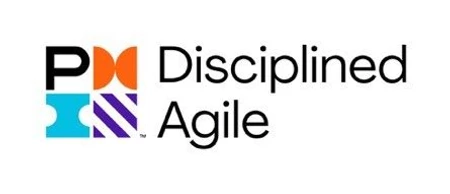
A critique of PMI’s Disciplined Agile; just another certification or a game-changer
Let’s get straight to it. PMI’s Disciplined Agile (DA) has the potential to be a game-changer for the industry; but can PMI sell it and gain traction over the mature marketing machines of SAFe and Scrum?

I’ll give you my views and thoughts in this post. I’ve just spent a day going through and reading the entire body of knowledge that is open and free on PMI’s website. I also took their short online intro course as well as discussed DA with some coaches I know who have completed some of DA’s certifications in the past.
What is DA?
It is best to describe what DA is by first saying what it is NOT.
DA is not a framework like Scrum or SAFe, Frameworks in agile can best be described using this definition;
“…a particular set of rules, ideas, or beliefs which you use in order to deal with problems or to decide what to do.”
We can compare this idea of a framework with how DA sees itself; a tool kit of agile practices, approaches, mindset and guides. Tool kit in this context is defined as
“…a set of tools designed to be used together or for a particular purpose.”
https://www.collinsdictionary.com/dictionary/english/framework
Niall’s view: The phrase “tool kit” does not do DA justice. It is really a tool kit that comes bundled with a decision-making guide to help you make the best choices when you reach a point in your agile journey where you could go in one of many directions. For example, how do we design our at-scale workflow/lifecycle to ensure it is fit-for purpose? It is at these moments of choice that DA shines relative to the more prescriptive frameworks. The next section takes you through this example in more detail.
DA provides choice whilst being pragmatism and agnostic
The most striking differentiator for me was DA’s approach to deciding on how to design your lifecycle of work (from idea to DONE). A lot of frameworks attempt to “shoehorn” your current situation into one lifecycle whereas DA gives you a choice of lifecycles that cater for different goals/context. Here is the list of DA lifecycles to choose from and when they would apply:
The Agile Life Cycle: A Scrum-based Project Life Cycle; iterative delivery but without the ability to ship every sprint. Work is batched and shipped.
The Lean Life Cycle: A Kanban-based Project Life Cycle; delivery approach where the overhead of scrum ceremonies is considered wasteful. Requires a disciplined approach but can be useful in mature teams.
The Continuous Delivery: Agile Life Cycle; iterative delivery but with the ability to ship every sprint. Work is shipped without a batching phase resulting in greater agility. Used with a persistent team model (not project-centric)
The Continuous Delivery: Lean Life Cycle; this lifecycle is a progression from the previous lifecycle with the team shipping weekly or even daily as required. Again, is used with a persistent team model (not project-centric)
The Exploratory (Lean Startup) Life Cycle; delivery approach where the problem and/or solution is yet to be validated by customers.
The Program Life Cycle for a Team of Teams; typically seen in SAFe, LeSS and Nexus this is a common scaling model and DA has it here to choose should is make sense for your context.
As you can appreciate from reading all these lifecycles there is not one size that fits all situations. Often consulting companies will author a “playbook” that attempts to describe upfront what the lifecycle is to be for a company without an appreciation of the different use cases AND how valuable it is to make decisions like lifecycle design only when you need to (the last responsible moment).
What the practitioners are saying about DA
I spoke to my colleague, Ross MacIntyre, on his view of the accredited course he undertook (prior to PMI’s purchase of DA). He also had some reflections from a recent DA industry event in Melbourne.
Here are some of Ross’ comments re DA
DA acknowledges the present reality, making it come across as a realistic and achievable way forward towards an agile way of working. You come away thinking “We can actually do it”. Often agile frameworks put forward an operating model and target state that is so far away from where an organisation is that it seems unachievable.
Ross also told me an interesting story that shows the potential of what DA could do for both the agile (coaches etc) and traditional delivery (PMs) communities.
At the industry event one of the original authors of DA was speaking; the agile coaches didn’t consider the content to be particularly new, but the project managers were eating it up and getting lots of insights. Ross said that it was in that moment that he saw how PMI’s DA could be the common ground to connect two previously disconnected groups of people within organisations.
Certification versus competence to implement DA
PMI offers four new DA specific certifications to cover their body of knowledge; you can go here to learn more. Here are the four straight from the PMI website:
Disciplined Agile Scrum Master (DASM)
Disciplined Agile Senior Scrum Master (DASSM)
Disciplined Agile Coach (DAC)
Disciplined Agile Value Stream Consultant
It seems that PMI is rolling these out in the first half of this year as not all of them are available yet. Check here for the latest updates . https://www.pmi.org/certifications/agile-certifications. The four certifications align with the roles that will enable the education and adoption of DA within an organisation. The one interesting observation is the use of the word ‘Scrum’ in two of the roles/certifications. I found this odd given DA proclaims to be framework agnostic. I put it down to not confusing the market and leveraging the reputation Scrum has built to date.
Interestingly, PMI has retrofitted an existing certification to be the fifth along with the four new DA ones. The PMI Agile Certified Practitioner (PMI-ACP)® Certification is positioned as a means to assure the certification holder has obtained real agile experience along with the knowledge based DA certifications (my words). To quote PMI they say this certification allows you to “Demonstrate Your Agile Team Experience Runs Deep”.
Overall conclusion and closing thoughts
After my deep-ish dive into this body of knowledge I must admit, I am sold. DA’s flexible, agnostic, and pragmatic approach to introducing agile into an organisation out-performs frameworks due to its decision support model, the fact that it is not mutually exclusive to all the frameworks and that it recognises where most organisations are starting from. I cam away feeling like DA is a “grown up” way to get going with agile. And therein lies the problem; it does not support the typical agile “installation” approach many consulting firms take. Print off the agile playbook and drive it into the organisation. There is no big up-front design with DA; quite the opposite.
If DA has a limitation it would be the discipline required to use the DA. Of course, that’s the point, the pun is intended and seems to be the positioning PMI is going after in the agile delivery market; “if you are going to do agile then learn as you go and don’t be dogmatic”. Unfortunately, many sponsors of agile transformations seek upfront assurance and certainty (I know right, they don’t get it, yet).
So, DA may be a harder sell than SAFe which (as the name proclaims) positions itself “as a safe way forward into an unknown agile future.”
In response to my view on SAFe versus DA, Ross had a different view.
“Maybe, I'd be interested to hear. I wonder if it is easier though? PMI backed, documented process, and an ability in include SAFe”
If you’re a project manager and a member of PMI then get on board with DA; it is a great place to launch your career into the next phase where agile will become more and more required for all delivery roles.
If you’re an agile coach you might not find much new in DA, but its approach to implementation is unique and worth a good, hard and long look.
RATING: 4 STARS


